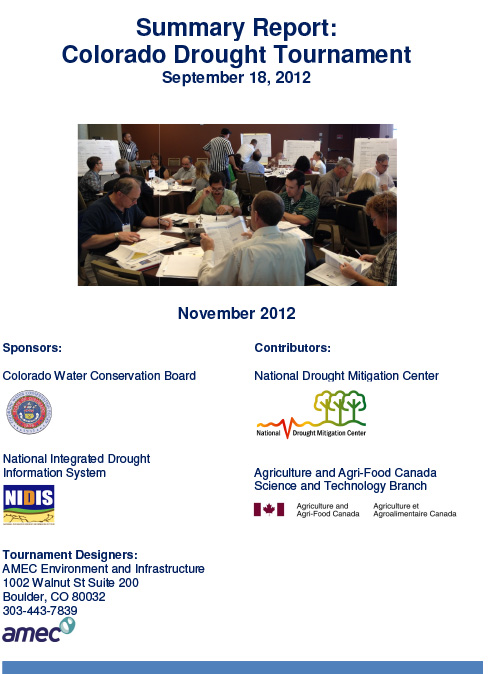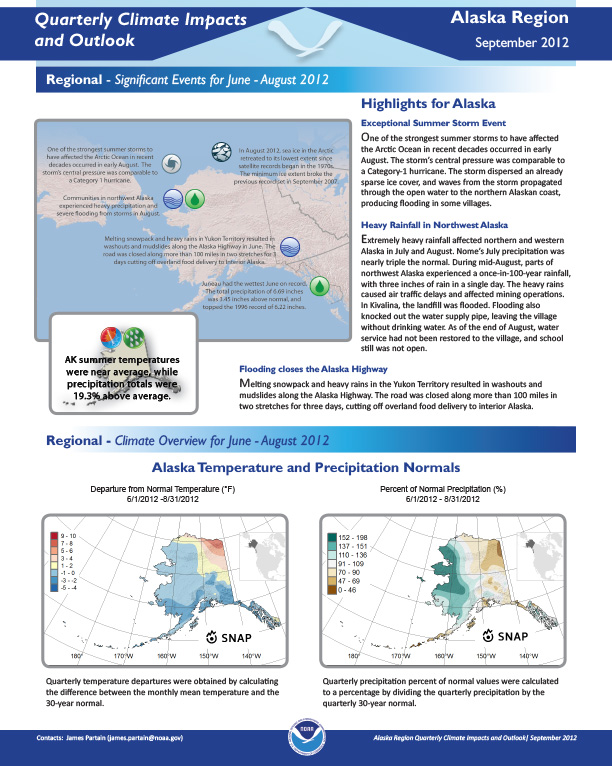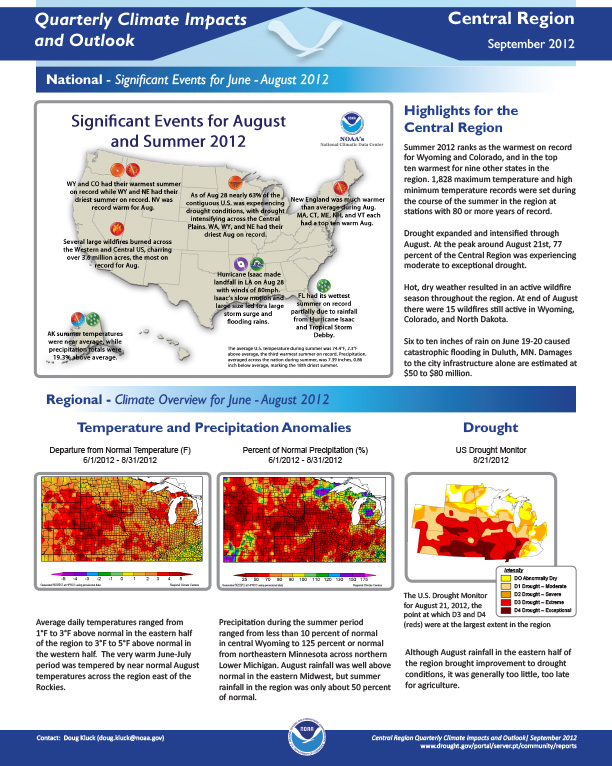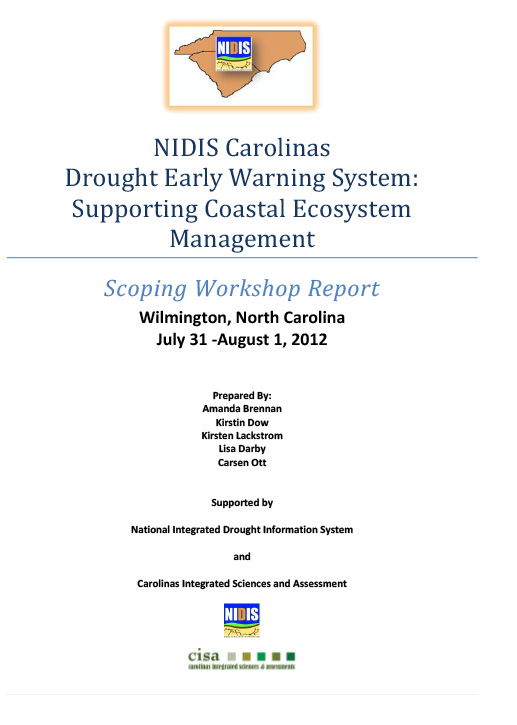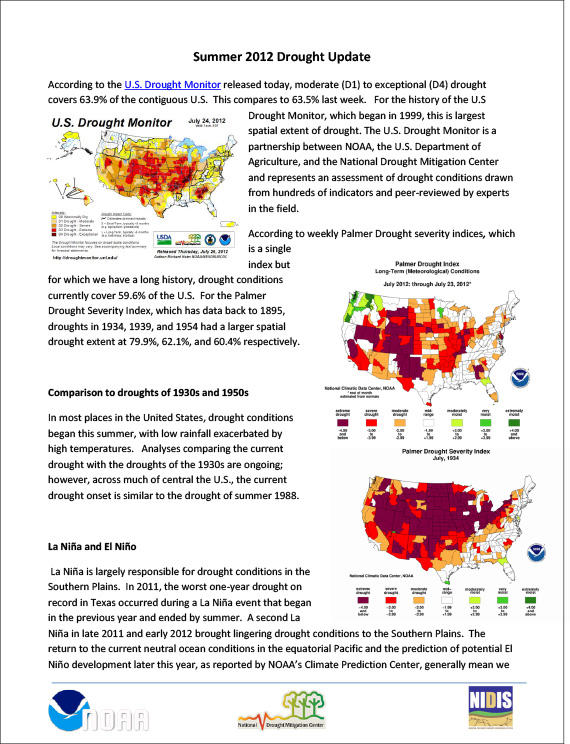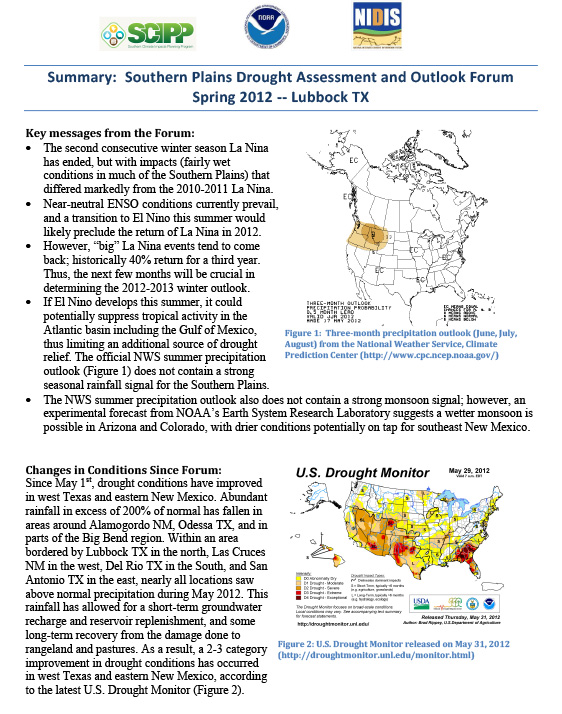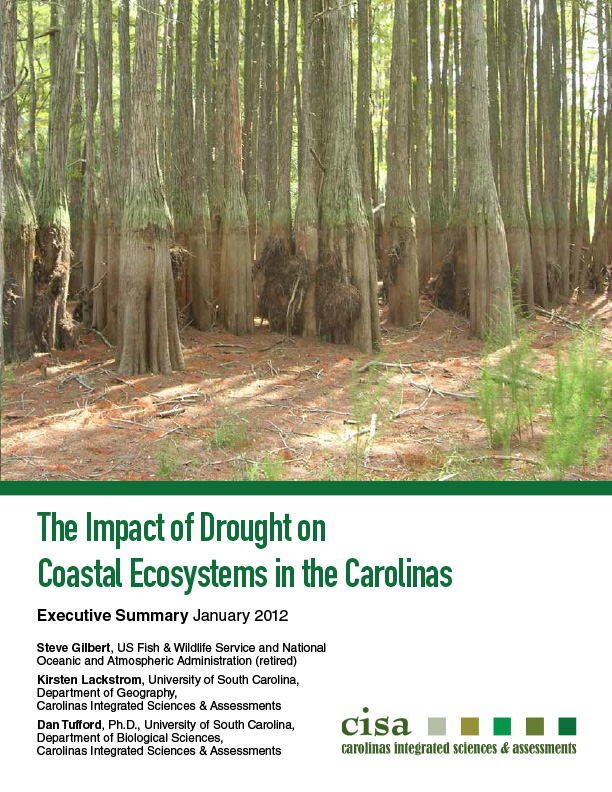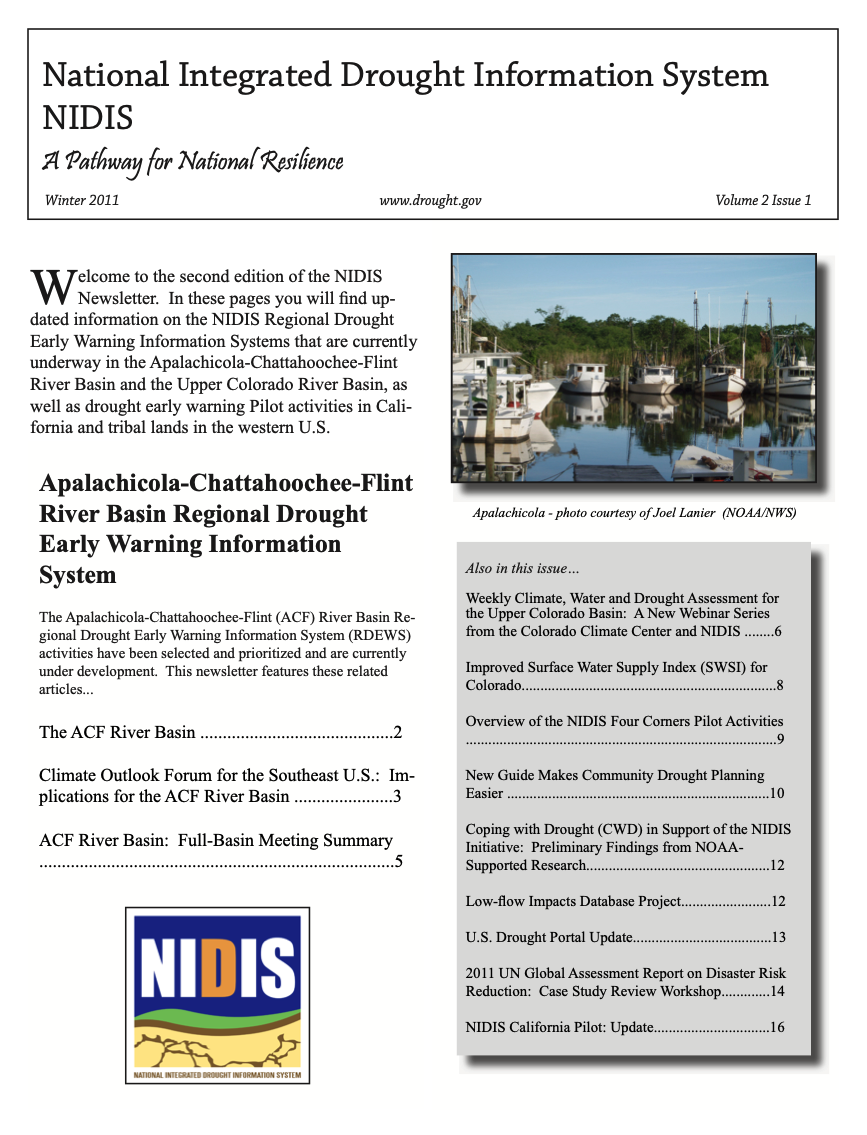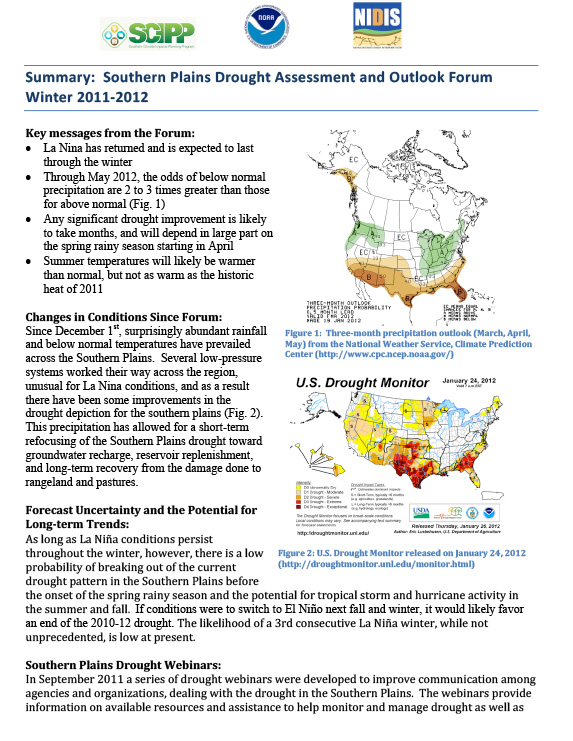Overview of the Colorado Water Conservation Board (CWCB) and National Integrated Drought Information System (NIDIS) held on September 18, 2012. Includes description of the event, feedback, and recommendations for the future.
Quarterly Climate Impacts and Outlook for the Alaska Region, September 2012.
Quarterly Climate Impacts and Outlook for the Central Region, September 2012.
Quarterly Climate Impacts and Outlooks Alaska September 2012. Covers quarter three, June July and August of 2012 and was developed and published in September 2012. Alaska climate and drought.
The NIDIS Carolinas Drought Early Warning System Scoping Workshop was held on July 31 – August 1, 2012, in Wilmington, North Carolina. Participants represented a diverse group of organizations and interests. The objectives of this workshop were to identify important issues of concern for the coastal region and to establish and refine priorities for a pilot project.
Weekly drought update for 2012 drought conditions. Drought conditions, forecasts, outlooks, impacts, and the impact of climate change.
Summarizes drought assessment and outlook forum held in Lubbock, TX in 2012.
This State of Knowledge Report provides a synthesis and analysis of the peer-reviewed literature regarding drought impacts on coastal ecosystems in the Carolinas. Its objective is to expand current, limited understanding of drought impacts on coastal ecosystems, to identify critical gaps, to inform future research efforts, and to suggest measures to facilitate drought adaptation for ecosystems. The report centers on biological, chemical, and physical impacts and is not meant to address social impacts.
Dry Times Volume 2 Issue 1
Prior to becoming a bi-weekly email newsletter, “Dry Times,” the NIDIS newsletter, appeared twice a year in the spring and fall.
Summary of meeting discusses conditions in the Southern Plains 2011-12. Topics include key messages from the forum, forecast uncertainty and the potential for long-term trends, drought webinars, and impacts of the 2011 drought to water, agriculture, wildfire and ecosystems.


